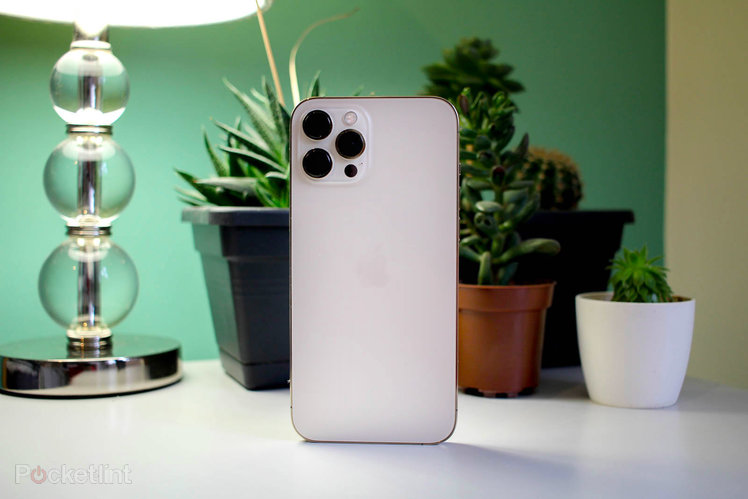
The Apple iPhone 12 range has been split into four different models – the iPhone 12 mini, iPhone 12, iPhone 12 Pro, and this, the iPhone 12 Pro Max – giving us more choice than ever before when it comes to getting the company’s flagship model.
While they all sport the same processor, same 5G connectivity, and same screen tech (albeit at different sizes, of course), if you look closer there are other differences. At the top of the range sits the iPhone 12 Pro Max, with its large screen and improved cameras.
We’ve been using the supersize model to find out if it’s just about going big, or whether there’s more to this iPhone than the others in the range.
New design and screen
- 6.7-inch all-screen OLED display, 2778 x 1284 resolution (458ppi)
- Dimensions: 160.8 x 78.1 x 7.4mm / Weight: 228g
- Finishes: Graphite, Silver, Gold, Pacific Blue
- IP68 protection, ceramic shield screen
The 2020 iPhones sport a shiny new design that is more akin to the latest iPad Pro and Air models. Or, if you’re harking back to yesteryear, the iPhone 4 from 2010.
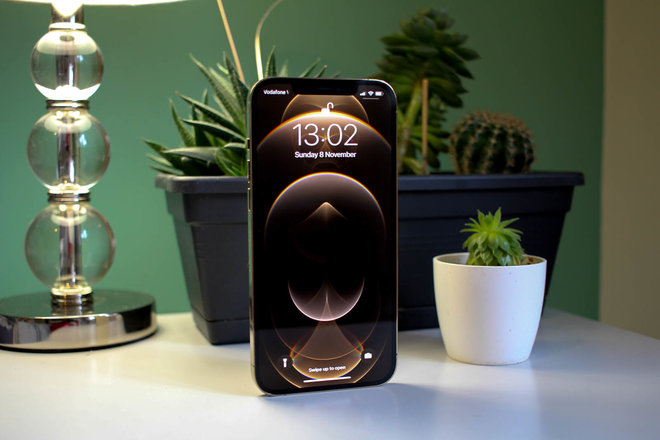
That design change – which sees the buttons, speakers, and Lightning port stay in pretty much the same place as previous years – delivers a number of benefits. The main is that the 12 Pro Max packs in an even bigger screen than the iPhone 11 Pro Max from 2019 – it’s now 6.7-inches compared to 6.5-inches – in a footprint that is roughly the same. If you’re counting, the 12 Pro Max is actually a little thinner than its predecessor.
Screen bezel is still present – Apple hasn’t gone all Samsung quite yet – but because of the flat surgical-grade stainless steel band edge around the device, it appears thinner.
That screen sure is big, too, but Apple believes people always want bigger screens so why not give them that? It’s an Apple Super Retina XDR display that’s HDR Dolby Vision ready and comes with True Tone technology for adapting the colours to your environment. It’s the same as found on the other models in the iPhone 12 range, just bigger.
Whether you’re playing the latest game, watching a spot of Netflix or just reading an email, it’s a luscious display. You won’t find anything to complain about visually speaking. Although, given the size, it can feel weighty if you’re holding it one-handed – have a 20 minute FaceTime call and you’ll be begging for it to be over so you can rest your arm.
The 12 Pro Max comes in four colours – Graphite, Silver, Gold, and new Pacific Blue). The gold is very gold – gold jewellery style, which you’ll either like or despise. But at least the frosted glass back, which is a lot more neutral, does help tone things down a bit.
In the top left corner, you’ll find the phone’s three cameras, a LiDAR scanner, flash and microphone. Because the new camera sensors are different from the iPhone 12 Pro model, the camera enclosure is considerably bigger. That’s one of the key things about the Max.
Performance and battery
- Apple A14 processor
- 3,687mAh battery
- 20W fast-charge
- 5G connectivity
Like the other phones in the iPhone 12 range, the Pro Max is powered by Apple’s A14 processor. It’s fast, loads games and apps quicker than last year’s processor, but really focuses its power on making sure the iPhone can cope with the image and video processing you’ll be asking it to do. Those camera mean it’s now being asked to do a lot.
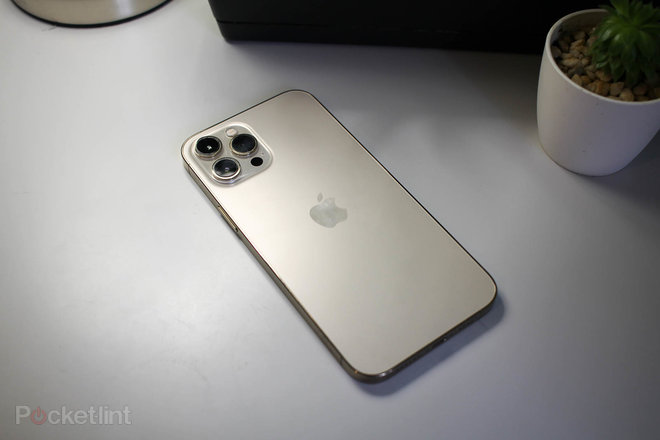
There’s also 5G connectivity, which depending on where you live will either change your world or not be something that you benefit from for some time. Just as we found when reviewing the iPhone 12 and iPhone 12 Pro when you do get 5G connectivity the Pro Max speeds along. Depending on your location and your network you’ll be able to achieve download and upload speeds in the hundreds of Mbps rather than tens of Mbps.
And 5G isn’t just about speed. It will improve latency amongst other things, which will help to improve online gaming, and apps that we’ve not even yet thought about.
Think of 5G as a future investment, rather than something you’ll be guaranteed to be benefiting from on day one. Besides, Apple has developed the iPhone 12 range to only uses 5G when it’s available and you need it. That, in turn, helps to save battery life – there’s no point having 5G on when your phone’s in your pocket or you’re reading an email
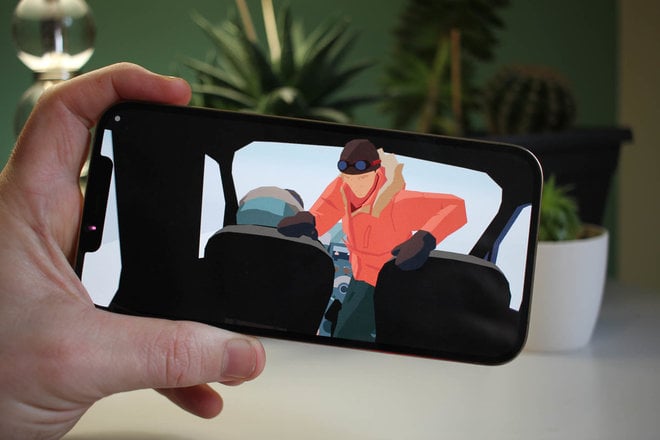
And talking of battery life, it’s very good indeed. So far with what we would call average usage we’re easily getting to the end of the day with around 60 per cent of battery still left. Apple’s battery management is decent, because the iPhone 12 Pro Max doesn’t have a particularly capacious cell compared to much of the competition.
Gaming, Twitter, and recording in 4K does have an obvious impact, as you would expect, but no more than usual. You’ll be hard pushed to run out before you find a charge within a 24-hour period.
Software
- iOS 14
The Apple iPhone 12 Pro Max runs on iOS 14, like the rest of the iPhone 12 range, and with this software comes a number of features, from widgets on the home screen and App Clips, to Messages and Maps improvements.
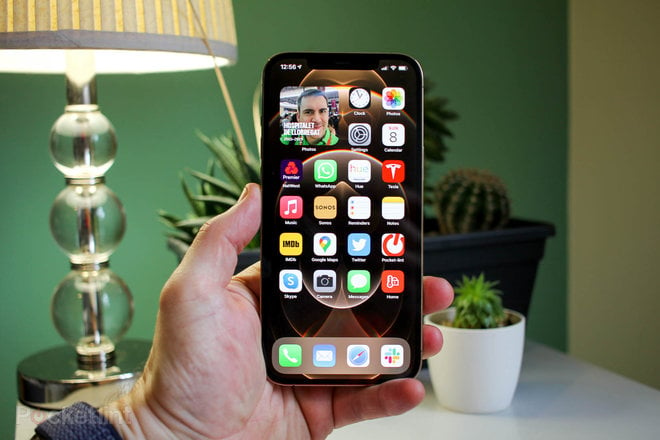
Of course, the software is available on all iPhones from the iPhone 6S and later so most features aren’t exclusive to the iPhone 12 series. There are a few that are, such as Night Mode on the front camera, but the overall software experience will be identical to any other iPhone.
That makes it familiar for those upgrading (but with the beauty of the bigger display if upgrading from Touch ID models), and relatively simple – although a more closed system – for those moving from Android.
You can read more about iOS 14 and all its features in our separate feature.
Cameras
- Triple rear cameras:
- Main: 12-megapixel, f/1.6 aperture, optical image stabilisation (OIS)
- Telephoto (5x optical zoom): 12MP, f/2.2, OIS
- Ultra-wide (0.5x): 12MP, f/2.4
- LiDAR scanner
- 12MP selfie camera
- Dolby Vision video capture
The biggest difference between the iPhone 12 Pro and the Pro Max can be found with the cameras. Put simply the iPhone 12 Pro Max cameras are better. But of course, it’s not always that straightforward.
While the iPhone 12 Pro and the iPhone 12 Pro Max share the same headline 12-megapixel sensors, the two phones differ when it comes to focal lengths and the main sensor’s ability. Both phones share the same ultra-wide lens. But the Pro Max’s main camera has larger pixels (1.7µm) because it’s a physically bigger sensor.
Where things are noticeably different is the telephoto lens. The Pro Max features a 5x optical zoom (compared to a 4x optical zoom range found on the iPhone 12 Pro), so it can reach that bit further and make far-away subjects look as though they’re closer. Furthermore, the Pro Max also offers sensor-shift optical image stabilisation, which really helps to negate handshake to help obtain sharp shots – and it makes shooting them easier too.
Also noticeable is the 12 Pro Max’s ability to quickly take pictures in low-light conditions. It means you don’t have to rely on Apple’s Night Mode function – which can take up to 3 seconds to take a shot – and that in turn means less blurry shots.
And although it is harder to spot, on closer inspection you can see more detail in the iPhone 12 Pro Max pictures than the iPhone 12 Pro images. No surprise, given the larger main sensor in the Pro Max. Here’s a side-by-side.
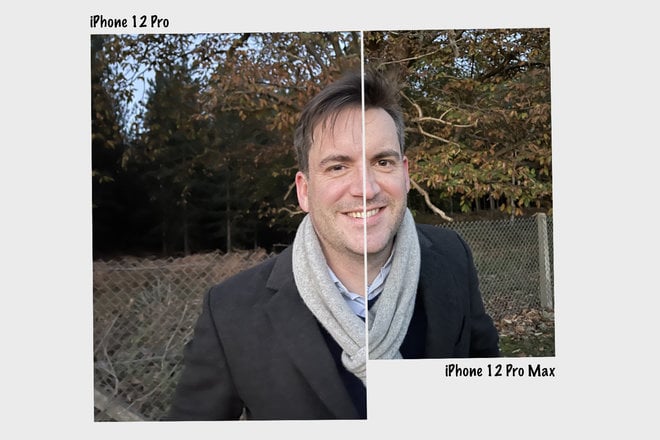
However, don’t expect more detail to instantly translate into vastly different advances in camera performance. Yes, it is better, but it perhaps not the leap you might be expecting. It is still the same 12-megapixel sensor after all. Gloat, but don’t gloat too much, would be our recommendation.
Both the iPhone 12 Pro and the iPhone 12 Pro Max take amazing pictures, it’s just in some instances the iPhone 12 Pro Max will take the same picture slightly better. It depends how much you want to pixel peep at the results.
A lot of the picture prowess, we believe, is down to the sheer power of the processing going on in the background to enhance, tweak, and develop your photos to their best looking – all within a matter of milliseconds.

Apple’s array of picture technology is starting to sound like a dictionary in itself. There’s Smart HDR 3, Deep Fusion, Apple ProRaw (still to come), HDR recording with Dolby Vision, Night Mode, and of course Portrait mode (the blurred background classic).
All that technology can get a bit aggressive at times, especially in low-light environments – but it’s not really noticeable until you start pushing the camera to its limits. Which we, of course, tried to do.
In our selection of sample shots you can see the hair on a horse’s nose in bright daylight is captured beautifully, as is the reflection of trees on a still lake. However, lose the light and the iPhone 12 Pro Max starts to struggle as the camera shifts towards compensating with artificial intelligence (AI) – just look at our dark grey jacket and the background in our side-by-side shots to see what we mean.
Low-light shots therefore have a tendency to soft and flat in places, but we are still incredibly impressed by the performance overall – and we have to keep reminding ourselves this is a phone still.
On the video front, it’s equally impressive. You get HDR Dolby Vision support in phone with the ability to shoot 4K and 24, 30, and 60fps, and the advantages you have with the new lenses and sensors are enjoyed here too.
MagSafe
- Optional extra
- 15W charging
There’s also wireless charging, but now Apple has introduced a new technology called MagSafe wireless charging. It’s basically a wireless charging puck, similar in approach to the Apple Watch charger, that suckers to the back of your iPhone 12 Pro Max with magnets to ensure you get a connection to start charging.
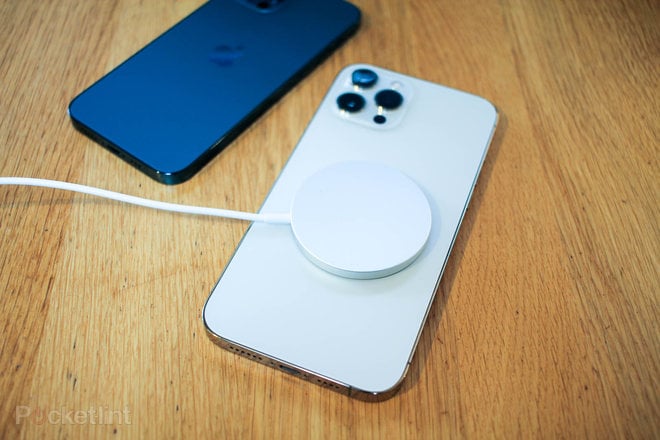
It’s an optional extra, but works really well, delivering a faster charge time than a traditional wireless pad, and means you can charge and use the Lightning port at the same time – handy, as we’ve already found if you’re using an external mic when filming, for example.
